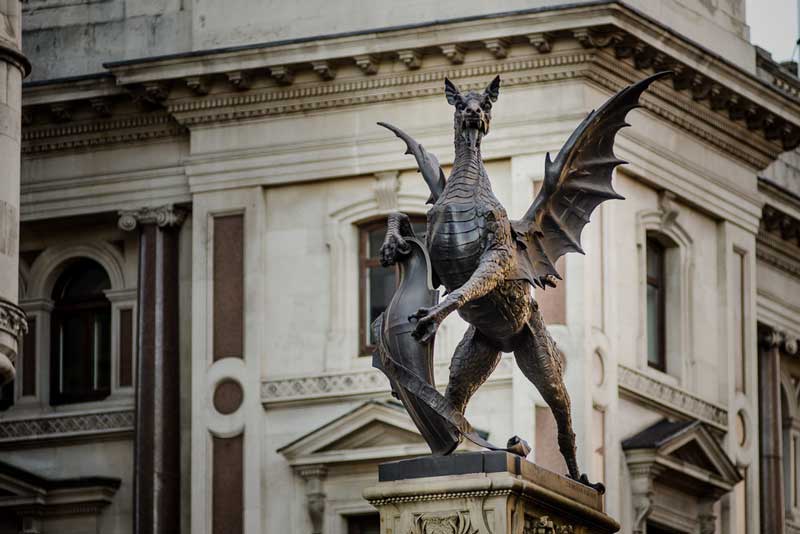
There was a time, when London was a walled city like many other ancient cities and entry to the city was restricted through the gateways or archways. Among those numerous gates, today only the Temple Bar Gateway remains intact. Currently the gate is located just north of St Paul’s Cathedral, about half a mile east from the spot where it originally stood on Fleet Street until the late 19th century. Built in the 17th century, the present structure was designed by Sir Christopher Wien, which replaced a previous wooden structure and before that a chain and posts.
The name Temple indicates the area south of Fleet Street known for its law courts and the Bar at Temple was first mentioned in 1293, which scholars believe was a simply a chain between two posts. Over the years, many other structures were constructed on the site. In the late middle Ages, a timber arch stood on the spot, which miraculously avoided being destroyed by the Great Fire of London in 1666. The city needed a big makeover, following the Great Fire. During that time, the condition of the wooden Temple Bar was also pathetic and King Charles II commissioned Wren to create the new Temple Bar along with all the other structures. The new Temple Bar, made from Portland Stone, took three years to build and was completed in 1672.The gate consists of a wide arch for road traffic and two smaller arches for pedestrians to pass through. Added to that, the gate is decorated with the statues of Charles I, Charles II, James I and Anne of Denmark, placed in the alcoves on each side. The statues were carved by John Bushnell. It is interesting to note that, the heads of traitors were put on spikes above the roof of the arch in the 18th century as a warning.



As London grew more industrial during the late 19th century, the City of London Corporation planned to widen the road, it was decided to dismantle the Temple Bar Gateway stone-by-stone, in January 1878. Consequently, the 2,700 stones of the gateway were put in storage by the Corporation of London. Two years later the arch was bought by Lady Meux, wife of a wealthy brewer named Henry Meux, based in Theobalds Park, and she had the gateway rebuilt in her Hertfordshire estate. For the next 123 years, the magnificent Temple Bar stood in Hertfordshire and suffered natural deterioration and human vandalism over the years. Finally, the arch was bought by the Temple Bar Trust in1984, dismantled again in 2003, restored and brought back to its original condition, before it was opened to the public on 10 November 2004, at the entrance to Paternoster Square by St Paul’s Cathedral.

Meantime, on the previous site of the Temple Bar Gateway, where Fleet Street meets the Strand in the City of Westminster, outside the Royal Courts of Justice, there now stands a marker, a neo Renaissance pedestal created by Horace Jones featuring Charles Bell Birch’s sculpture of a dragon – the symbol for the City of London.


The pedestal, which was unveiled in 1880, features likenesses of Queen Victoria and Edward VIII, the last royals to pass through Wren’s gate.